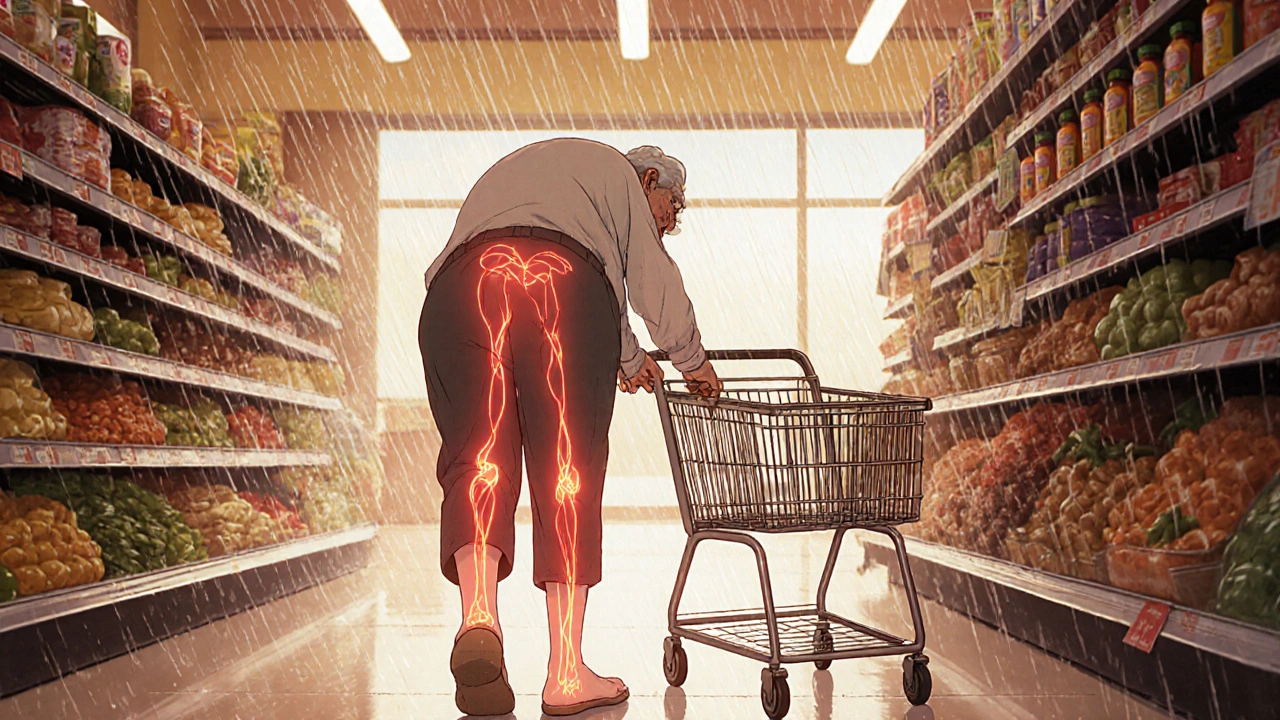Neurogenic Claudication: Causes, Symptoms, and Treatment Options
When you walk and your legs start to ache, tingle, or go weak, it’s easy to blame aging or bad shoes. But if the pain eases when you sit or bend forward, you might be dealing with neurogenic claudication, a condition where nerve compression in the lower spine causes pain that worsens with walking and improves with rest. Also known as spinal claudication, it’s not a disease itself—it’s a symptom of something deeper, often spinal stenosis, narrowing of the spinal canal that squeezes nerves as they exit the spine.
Neurogenic claudication is different from peripheral artery disease, a blood flow problem that causes leg pain due to clogged arteries. With artery issues, pain comes from lack of oxygen to muscles and doesn’t change much when you bend over. With neurogenic claudication, bending forward opens up the spinal canal, takes pressure off the nerves, and suddenly, you can walk again. That’s why people with this condition often lean on shopping carts or stop to rest after a few blocks. It’s not laziness—it’s biology.
Most cases happen in people over 50, especially those with long-term back problems. The main culprits are bone spurs, thickened ligaments, or slipped discs pressing on the nerves that run down to the legs. It’s not rare—studies show nearly 1 in 4 adults over 60 have some level of spinal stenosis, and about half of them feel symptoms. You might also notice numbness in your feet, cramping in your calves, or even trouble with balance. If you’ve tried painkillers and stretching without real relief, it’s worth checking if nerve compression is the root cause.
Unlike heart-related chest pain, neurogenic claudication doesn’t show up on a stress test. Diagnosis usually needs an MRI or CT scan to see exactly where the nerves are being pinched. Treatment isn’t one-size-fits-all. Some people get relief with physical therapy that focuses on core strength and posture. Others need epidural steroid injections to reduce swelling around the nerves. For severe cases, surgery to widen the spinal canal can be life-changing—but it’s not always necessary. Many manage well with lifestyle tweaks: walking shorter distances more often, using a cane, or even adjusting how they sit and stand.
The posts below cover what works—and what doesn’t—when it comes to managing chronic pain conditions like this. You’ll find real advice on pain meds that actually help without the risk of addiction, how to spot when a symptom is more serious than it seems, and what alternatives exist when standard treatments fall short. Whether you’re dealing with this yourself or helping someone who is, these guides cut through the noise and give you clear, practical steps to take next.
Spinal Stenosis and Neurogenic Claudication: How to Recognize Symptoms and Choose the Right Treatment
Neurogenic claudication causes leg pain when walking due to spinal stenosis. Learn how to spot the shopping cart sign, differentiate it from vascular issues, and choose effective treatments - from exercise to surgery.
© 2025. All rights reserved.

